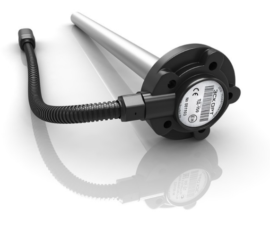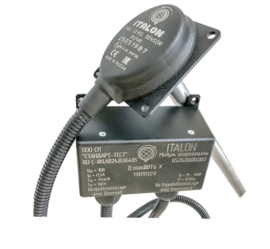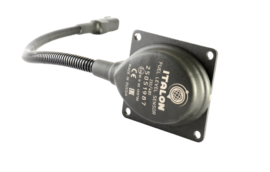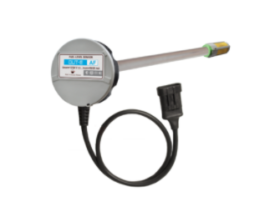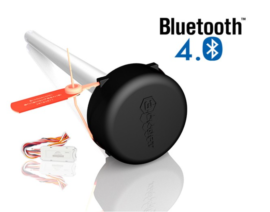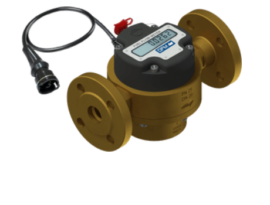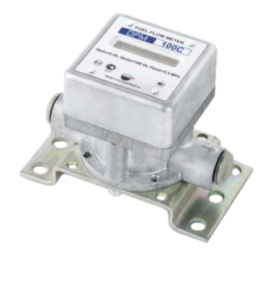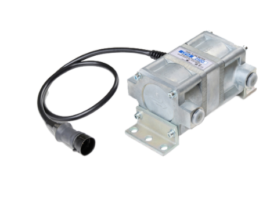One of the many reasons why a fleet owners implements vehicle tracking system for their long route truck is to regain control over the losses incurred on the road.
Unmonitored vehicles are left vulnerable to fuel theft, and the surveillance of fuel tank level becomes critical to catching thieves and the perpetrators in their act.
Fuel costs can amount up to 30% of all fleet management expenses, therefore affecting operating costs and company’s profit in general. Among the major fuel related challenges experts defines as:
- Fuel theft
- Increasing fuel costs
- False or incomplete fillings
- Excessive Idle state amounting to high fuel consumption
Siliconfusion GPS tracking and telematics platform can help you cope with the major challenges related to fuel monitoring and management in the most user-friendly way.
BENEFITS OF USING OUR SYSTEM
Five fuel monitoring and management solutions for a vehicle fleet
Type of fuel Level Sensors and Pros & Cons of each method
The financial crisis and the COVID-19 pandemic have struck the transportation and logistics industry hard and have caused a huge amount of damage by now. Many companies that own fleets of trucks, light vehicles and special machinery have suffered substantial losses. In these circumstances, the need to reduce the fuel consumption costs and maintain the efficiency of the business has become one of the paramount requirements for survival. In this article, we will cover the main solutions you could use to achieve this.
- Fuel monitoring by means of a CAN bus (standard fuel sensor)
- Flowmeters as means of fuel monitoring
- Fuel level sensors
![]()
The management and employees of the transport companies, who have been in the business for quite some time by now, are probably well familiar with the current situation. We have already witnessed something similar in 2014-2015 as well as in 2008-2009. Every crisis proves that the GPS monitoring systems are a must in the transportation industry.
On average, the costs related to fuel consumption constitute up to 30-35% of the operating costs of any fleet. In case of a haulage or road-construction company, this number can reach 45-50% mark. Fuel consumption has a direct influence on how profitable a business is. For the latter to work efficiently, the reduction of costs and a comprehensive monitoring effort based on a tight control over the use of fuel are obligatory.
![]()
However, there are still many companies that have yet to implement any fuel monitoring solutions while others need to renovate the already deployed ones. Some managers do not believe this to be that necessary or even turn a blind eye on their employees’ transgressions. Moreover, sometimes a company already has some up-to-date monitoring systems but the management either does not know how to make use of them or simply does not want to do so. In other cases, the implemented solutions are inefficient in certain types of vehicles.
This review will help you get a better grasp of what different ways of fuel monitoring there are and how best to use them. The article will be useful to fleet owners and managers as well as the companies that install telematics equipment.
1. Fuel monitoring without GPS systems
Many companies still run their fleets without any GPS/GLONASS monitoring effort. Let’s assume that the fuel consumption is still under some kind of control and it seems that there is nothing out of ordinary with how fuel is used. Still, can the management be absolutely sure of that? Probably not. An effective monitoring effort implies that you can access the data coming from two or more different sources, compare the numbers and see if there are any discrepancies.
![]()
If you only use the odometer readings, you have to reconcile with the idea that the accuracy of your data may not be as high as desired. The margin of error of these devices can reach up to 15-20% and the drivers can tamper with them to give you “inflated” numbers. If you rely on receipts from gas or diesel stations, there is always a risk of those being falsified.
Fuel cards also cannot be deemed as a reliable way of fuel monitoring: a driver and a gas station employee can always work out some sort of an agreement.
Additionally, no fleet is safe from fuel thefts from the tank, “under-refuelling” and misuse of surpluses. Not to mention the losses while idling, misuse of vehicles for personal benefit by drivers and negligence while operating a unit, which may lead to the waste of gas or diesel. All these are hard to prove or prevent without some extra equipment.
![]()
2. GPS monitoring without fuel sensors
One of the most commonly known solutions for the monitoring effort is the use of GPS/GLONASS trackers that are able to provide you with the data on the vehicle’s movement, including the coordinates, speed and mileage.
The mileage reported by the trackers is far more accurate than that coming from the odometer. Thus, you gain access to the data that helps calculate the fuel consumption properly.
In addition, you can compare the numbers in both paper reports, filed by the drivers, and the reports on your monitoring platform. This makes it easy to find out if the drivers report “inflated” mileage to cover the fuel thefts.
![]()
3. Fuel monitoring by means of a CAN bus (standard fuel sensor)
![]()
What is a CAN bus?
CAN (Controller Area Network) bus is a communication interface that enables interactions between a vehicle’s on-board system and various sensors and other device, both in-built and external. CAN bus is currently present in any modern vehicle.
By connecting a GPS/GLONASS device to the CAN bus of your car or truck via a contactless CAN reader, you gain access to the data on the fuel in the tank collected by the default fuel level sensor and further transmitted to the platform by the tracker. The data from CAN bus also helps keep track of engine hours, pressure, temperature, etc. The only requirement is that the data transmission protocol of the vehicle be an open one.
This is the most easy and cost-efficient way of remote fuel monitoring. Yet the default fuel sensors are not perfect: their margin of error can reach up to 15% of the tank’s total capacity. Therefore, it is still hard to get accurate data on when and where every refuelling took place and how much fuel was actually poured into the tank.
The fleet managers that rely only on the CAN bus data may have to be prepared for “dead zones” (5-10% of the tank’s capacity at the bottom and the top), “false” drains or incomprehensive level surges and drops on the platform’s graph chart. Subsequently, the margin of error of fuel level measurement on a vehicle with high fuel consumption can amount to 100 litres.
In addition, you need to remember that this fuel monitoring method is not much of a help when it comes to tracking fuel thefts. Below you can see the fuel graph chart with the data from a vehicle’s default sensor.
![]()
You can compare it with the graph chart showing the data obtained by means of two different sensors installed on the same unit that we provide further below. The red line represents the data from the default sensor. The blue line – the data from an Escort fuel level sensor (see item 5 of the article for more information).
![]()
Despite its several obvious drawbacks, the CAN bus is your option when it is impossible to mount any external sensors on the vehicle. Besides, not everyone needs 100% accurate data. If you have a fleet of light vehicles and cars, perhaps, it would be easier for you to just fine-tune the reports on the platform, analyse the data from default sensors and still get a pretty good understanding of what is going on with the fuel in the tanks rather than spend money on more expensive equipment that is also fairly difficult to install.
![]()
4. Flowmeters as means of fuel monitoring
![]()
How does a flow meter work?
This sensor needs to be installed on the fuel pipe. It registers how much fuel has gone into the engine and during what time span the engine consumed it.
Some devices of this type can also report on engine hours and fuel temperature.
Flow meters can boast of a very small margin of error of 1-3%. This helps you get very accurate data on gas consumption and calculate the average numbers for each vehicle in particular. Yet they have their shortcomings too:
- Expensive: starting with a price tag and finishing with the maintenance costs;
- Prone to accumulating dirt: every such device needs to be checked and cleaned every now and then, otherwise the whole fuel system could suffer a severe malfunction;
- Inefficient in tracking drains via the return pipe: you either need another device installed or buy a more expensive flowmeter that can monitor both the injection and return pipes;
- Useless against the thefts made directly from the tank and “under-refuelling”
Once more, you can check how a flowmeter and a fuel level sensor perform on the same vehicle. The blue line represents the data collected by the flowmeter. The red line shows the fuel changes registered by the FLS, including every refuelling and drain. And the precision difference between the two devices is mere 100ml.
![]()
Despite all these shortcomings, the flowmeters often are the optimal solution for heavy machinery units. First off, the tanks of such vehicles usually have very complex shapes and that makes it difficult to install the capacitive fuel level sensors on them.
Secondly, the high quality flowmeters can also collect the data on motor engines and the overall state of the fuel system which spares you buying and installing several other sensors.
![]()
5. Fuel level sensors
![]()
How do capacitive fuel level sensors work?
The capacitive FLS is installed inside the vehicle’s tanks to keep track of any fuel level changes. In terms of data accuracy, the FLS are no worse than the flowmeters (up to 97-99% of precision).
However, to achieve this level of precision, you need to install and calibrate the sensor properly and then do the tank calibration. Because of that, the installation and configuration should be done by professional integrators.
Just like with any other sensors mentioned above, the FLS needs to be connected to a GPS tracker so that its data could get to the monitoring platform.
If the fuel level in the tank changes, you can then see when and where this happened on the monitoring platform. Moreover, there are sensors that do not require you to use any tracking device with them since they have their own GPS module and GPRS modem.
Along with accurate fuel level data, the capacitive sensors help you:
- Keep the record of refuelling and drains
- Track any false refuelling or “under-refuelling”
- Find out about any minute drains
- Establish if there were any drains via the return pipe
Some people think that the capacitive FLS cannot track the thefts from the return pipe. However, by carefully analysing the graph charts and reports on the platform, you are very likely to spot such thefts.
![]()
The fuel level sensor is a versatile and effective tool for monitoring the gas and diesel consumption on almost any type of vehicle. Yet it also has some disadvantages:
- The sensor’s tubes can be cut at any length required for a tank unless its height is less than 15 cm because in this case the sensor will not function properly. Therefore, sometimes you cannot install the device on a car or a light vehicle
- The sensor is difficult to install properly on the tanks of irregular shape. In this case, you either need to install a device of another type or mount two or more sensors on the same tank
- The margin of error can be higher in the ‘shallow’ tanks of elongated shapes (truck or train tanks) because the fuel in them sloshes whenever the angle of the tank’s inclination changes. In this case, you also need to install two or more sensors. This will increase the costs but you will be able to get accurate data.
![]()
Conclusions
As you can see, monitoring gas and diesel consumption efficiently is impossible without proper equipment. Choosing from the solutions suggested above, we would recommend the capacitive FLS. Except for the cases, when a flowmeter or a CAN bus becomes your only option.
![]()
